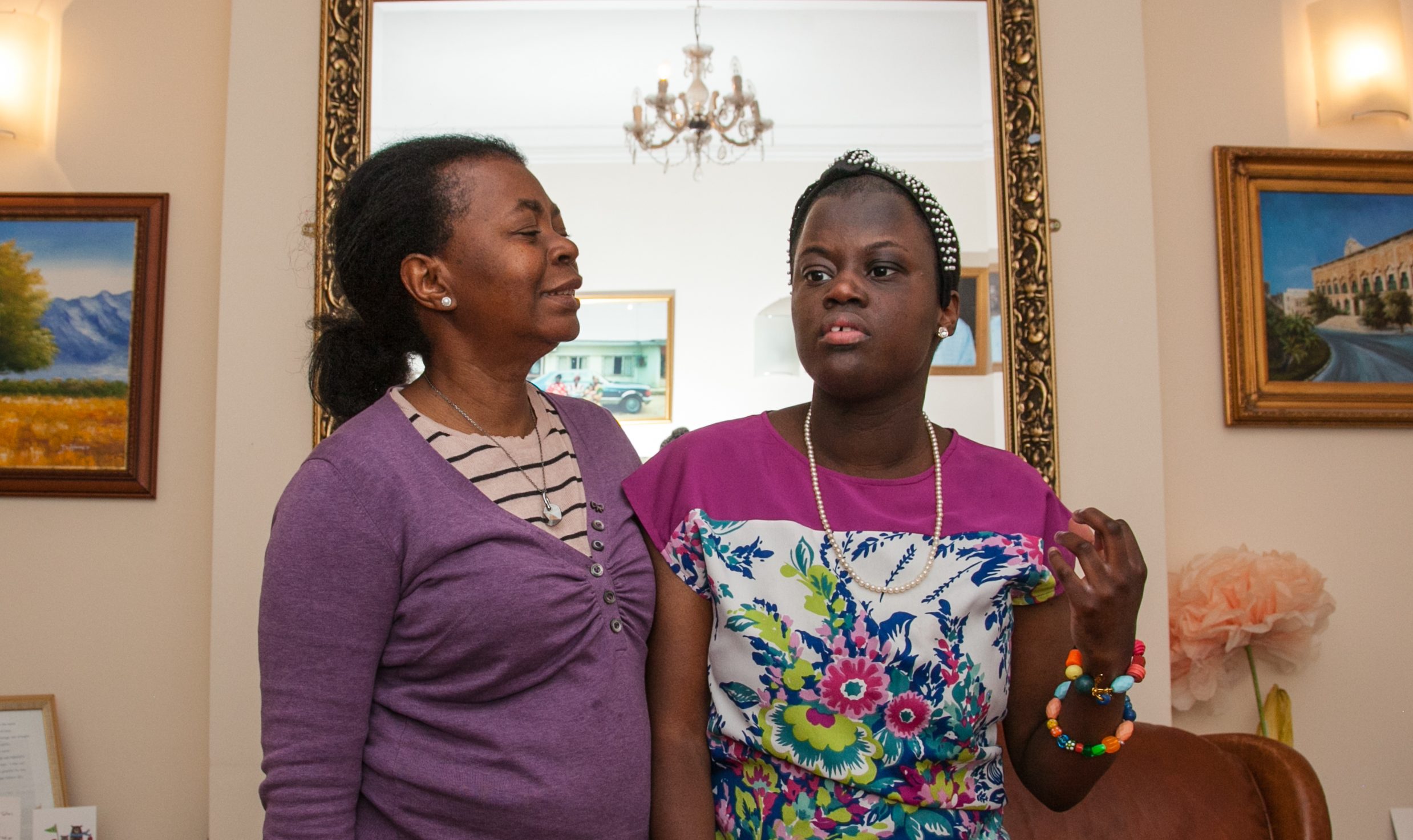Does your relative run off from their home or when out in the community?
How can you keep them safe?
Some people with a severe learning disability may run through open doors or windows, or away from the people they are with when out in the community. This can be very worrying for families, as people with severe learning disabilities may have little or no understanding of danger. There is an added worry about how the general public may react to them.
Families may feel that this behaviour means they must constantly keep their relative within eyesight. Going out in the community can become stressful: you want to let your relative have some independence and explore their environment as freely as possible but at the same time you don’t want them to come to any harm.
Find out the reasons for running off
In order to help reduce the likelihood of your relative running away, it is very useful to know why they are doing it. For example:
- Are they running away from something (a loud noise perhaps) or running towards something (an ice cream van)?
- Do they enjoy running off as part of a game or to get your or someone else’s attention?
- Does it satisfy a sensory need: for example, do they do it more (or less) when it’s raining, or could they simply enjoy the feeling of running?
Teaching new skills
By finding out why your relative runs off, you can start to teach appropriate skills that will help your relative achieve the same purpose as the running off – but in safer ways. See the Challenging Behaviour Foundation’s resources ‘Finding the Reasons for behaviour’ and ‘Positive Behaviour Support Planning’ for ideas of how to do this.
Examples may include:
- If they are running away from something, it may be helpful to teach them how to ask to leave using signs or pointing. CBF have communication information sheets that may be helpful.
- If it isn’t possible or appropriate for your relative to leave the environment, even for a short time, you can try to teach your relative to cope with situations that make them anxious. Our Positive Behaviour Support webpage has several resources that contain information about supporting your relative in a person-centred way.
- If you think the running off satisfies a sensory need, it may be helpful to plan a structured time for your relative to have that ‘running around’ time. Perhaps a key worker or personal assistant can go running with your relative or Direct Payments can be used to hire a personal trainer with experience of working with people with learning disabilities to do this.
- Other sensory considerations might be supporting the person to wear ear protectors if they are running away from loud noises or to wear sunglasses if outside seems too bright.
Planning ahead
Families may worry that their relative will run far away and be at risk of harm. There are several steps that you can take to plan ahead:
- You can place a mobile phone or trackable tag securely in your relative’s pocket when out in the community. GPS or other technology can be used to track the phone/tag and therefore your relative’s location. More information is included below.
- Consider proximity sensors that sound an alarm if someone walks a certain distance away from you.
- Keep information with the person about their condition/needs, their communication abilities and your contact details (more information below). This can be done by having a sunflower lanyard or temporary tattoos made with your contact information, or writing information in sharpie on the inside of your relative’s arm.
- Make neighbours aware that they need to contact you urgently if they see your relative alone outside the home.
- Similarly, let the local police station know that your relative may run off and discuss a plan. They can place a ‘marker’ on their database that someone is likely to need a quick response and urgent care. This is best done in advance of any actual emergency. If your relative has run off and you don’t know where they are, call 999 straight away.
Consider equipment in the home
- Alarms – You can buy sensors that will set off an alarm or send a signal to a pager when they sense movement through doors or windows. Also, pressure mats can be placed by doors and windows and will signal when someone stands on them. These items can be easily hidden and are also transportable and therefore useful for trips and holidays. See the websites EasylinkUK, Fledglingsand Living Made Easy
- Your local authority may be able to alter windows in your home so that they only open 3 inches but no further. This therefore means that you can get fresh air, but the gap is not large enough for someone to climb out.
It may be useful to erect a taller garden fence and perhaps trellising above that, to prevent anyone climbing over the top. Your local authority should be able to arrange this. Bear in mind you may need planning permission to erect taller fences, you should check the local authority planning guidance to see if they have a set of garden fence standards (that may require specific heights of fences in some areas, particularly front gardens). There may be additional rules if you live in a conservation area or listed building. For advice get in touch with your local authority planning team. If you live in rented accommodation and/or social housing or a leasehold property when making adaptations to a home, you, the housing association, or landlord will likely need to submit a tenant or landlord application to request these changes to be made before work is carried out. These adaptations can be funded through a Disabled Facilities Grant. If an application is rejected, you may be able to contact your local authority to ask them to appeal the decision.
Tools that can be used when in the community
- Emergency contact details on a wrist tag, identity bracelet or temporary tattoos containing your contact details can be worn by your relative. See the website Medical ID Alert Bracelets and Necklaces or CHILD SAFETY TATTOOS | Printabubble
- A blue badge for parking in ‘Disabled’ spaces can be obtained from your local authority: – this can help you and your relative avoid having to walk long distances from the car and therefore reduces opportunities for running off.
- A proximity alarm can be used to alert you if your relative walks further than a set distance. Other companies offer GPS trackers.
Using the least restrictive option
Whilst it is common to use child locks and harnesses in cars and lock external doors to keep young children safe using these products with older children and adults can be an emotive topic and the balance between the person’s safety and rights can be difficult to navigate. Any type of restrictive practice such as locks and harnesses should be the least restrictive option possible, and must be in the best interests of the individual, with regular reviews to determine if they are still necessary. Our information sheet provides further information:: https://www.challengingbehaviour.org.uk/wp-content/uploads/2023/01/010-Reducing-the-use-of-restraint-seclusion-and-other-restrictive-practices.pdf.
A social worker, learning disability nurse or occupational therapist or psychologist may be able to help find (and fund) suitable equipment or suggest alternative ways to support your relative to stay safe whilst maximising their independence.
Mental Capacity Act
Before using adaptations such as locks, sensory equipment or car safety harnesses for a relative over 16 years please get advice regarding the Mental Capacity Act (from a Social Worker or your local Community Team for People with Learning Disabilities). For information about the Mental Capacity Act please see: www.gov.uk/government/collections/mental-capacity-act-making-decisions
Please note that websites and products listed here are not recommendations from the CBF, they are for your information only. Readers are encouraged to evaluate the benefits and risks of each product before purchase.




